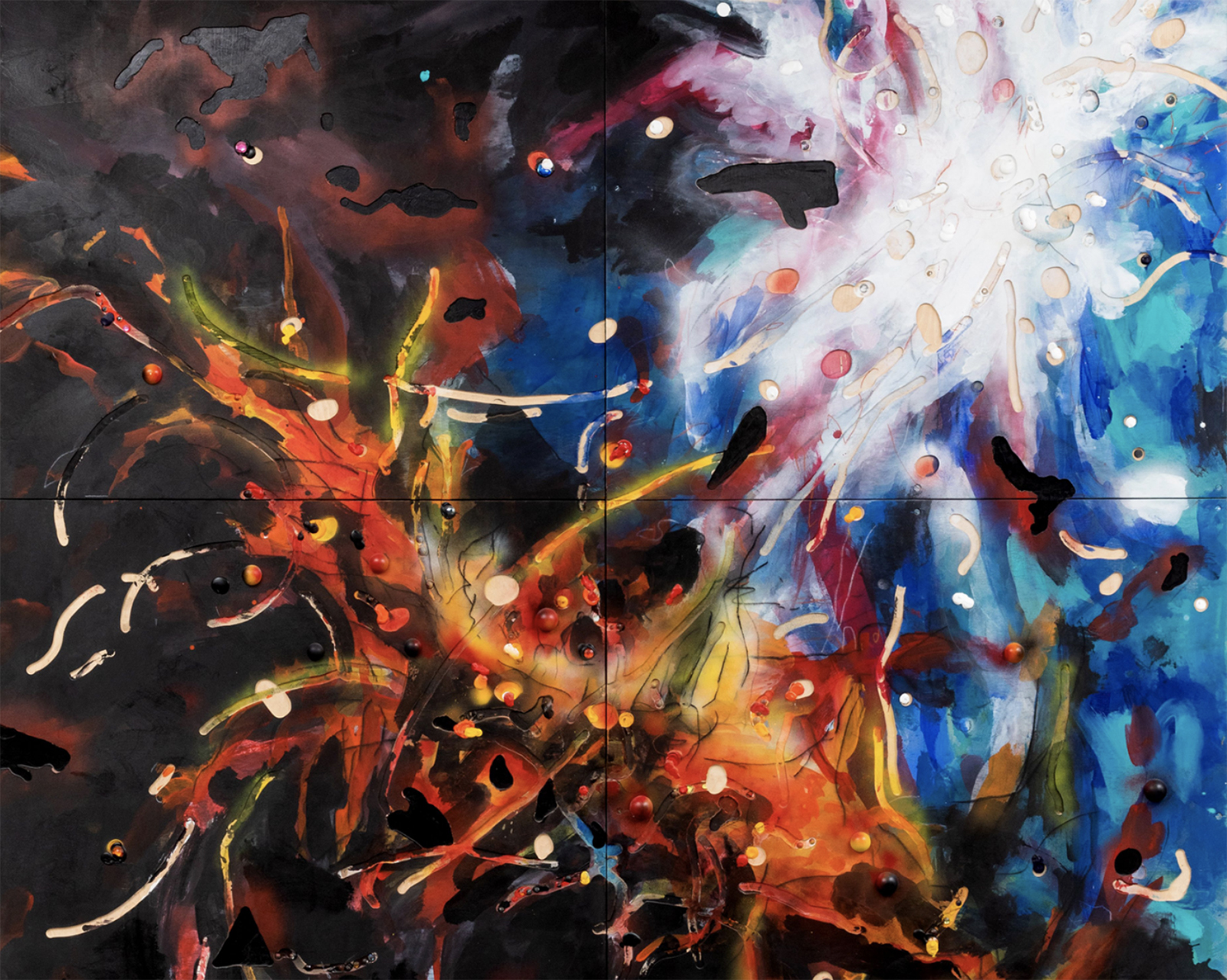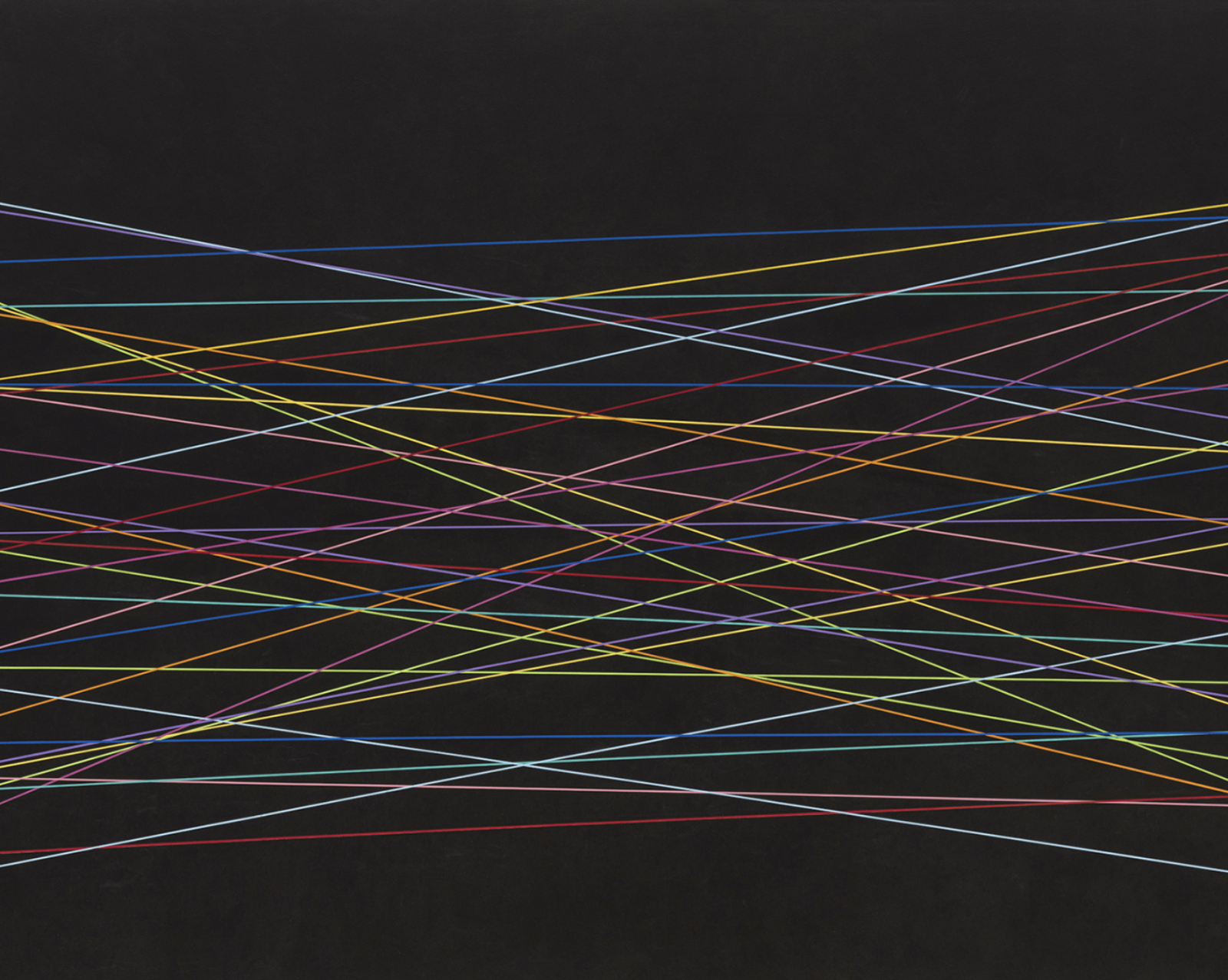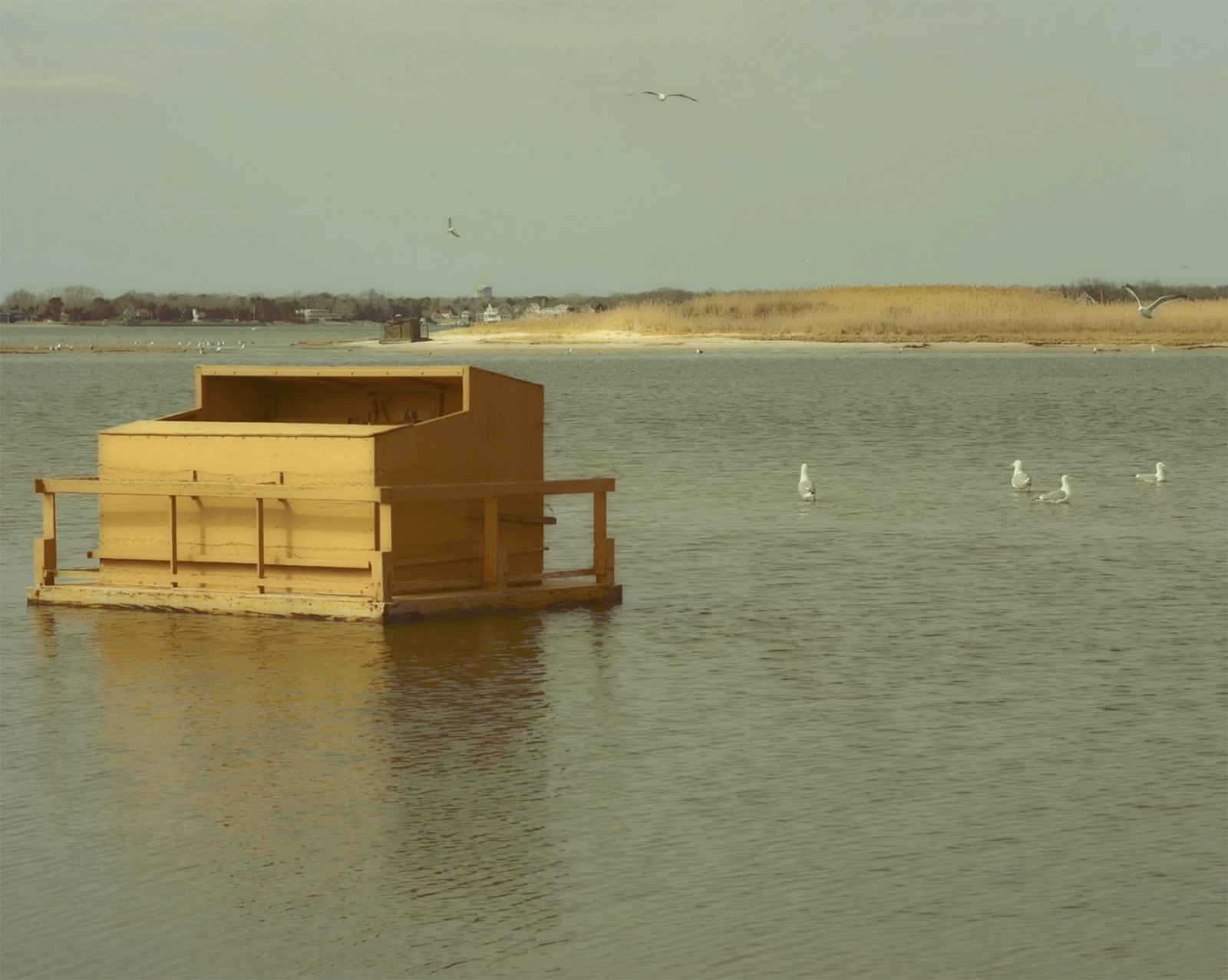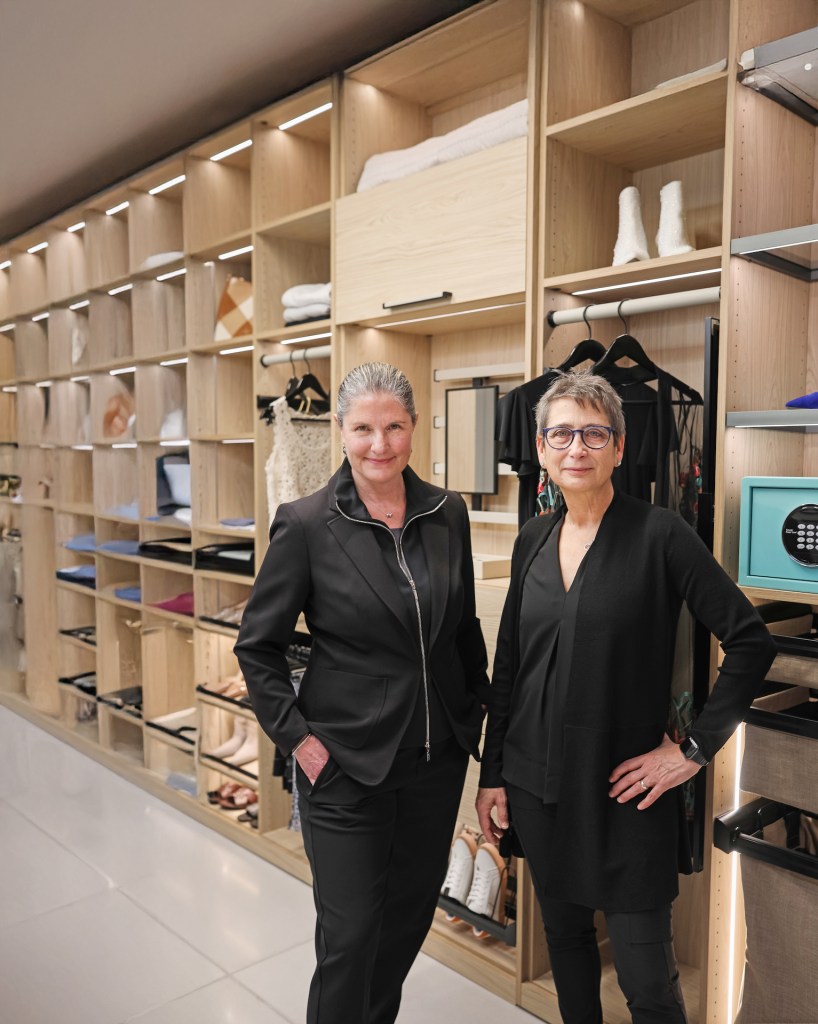Three Parrish Artists Connected Through Time and Space

Last week, the Parrish Art Museum unveiled a trio of solo exhibitions featuring East End artists John Torreano, Virginia Jaramillo and Peter Campus that will welcome visitors from now through February 27. As for the thread of commonality that connects these artists, they’ve discovered it to be stronger than just the area they call home and studio.
Torreano emerged as a painter in the late 1960s and has since expanded his works to include sculpture, relief, furniture and hand-blown glass. His signature style consists of painting dots in unique formations, unlike the uniformity found in pointillism. However, he soon sought to go beyond his early compositions and looked to the night sky for guidance.
“I’ve been interested in outer space since the early ’70s, mostly because I started off using dots to create an illusion of space back then,” he says. “And then I noticed that I was starting to be cliched in my distribution, so I asked myself, ‘Where are there dots in nature?’ Obviously the stars!”
Torreano’s spacescapes range from abstract to recognizable snapshots from the Hubble Space Telescope, and he prefers not to be bound by scientific accuracy. Painting Outer Space/Inner Space: 1989 to Present at the Parrish features 10 large-scale mixed media paintings on plywood panels that showcase the fruits of this uninhibited mindset.
“I don’t feel like I owe anything to the science of it,” he says, adding that space is largely a jumping off point for his imagination to take over. “In the end, I’m only trying to make paintings do things I haven’t seen them do, and if that means taking liberties with the imagery or the science, I don’t care. I use my painterly intuition to try and bring some kind of resolution to a painting.”
If Torreano is asked what trait links him to his fellow Parrish artists, Jaramillo and Campus, the first thing that comes to mind is their shared generation’s time and place in the history of art movements, particularly abstract expressionism, which he “cut (his) early childhood teeth on.”

Photo: JSP Art Photography. Courtesy the artist and Hales Gallery, London and New York, ©2021 Virginia Jaramillo
Jaramillo has lived in Hampton Bays for about five years since leaving her Soho residence which had gotten increasingly noisier over her 40 years there. In her East End studio, she’s able think and paint in peace, which has greatly benefitted her work. An abstract painter and pioneering minimalist, she draws inspiration from ancient cultures and mythology, scientific principles and the Japanese concept of Ma, or negative space.
“My paintings became more simplified, more simplified, until it was just a line that divided the space with a uniform color field,” she explains of her evolution as an artist and adoption of Ma. “It’s about the line and the space and the space within that space.”
Her Parrish exhibition is titled The Harmony Between Line and Space and features five of her latest paintings. The exhibition features two monumental contrasting works, “Quantum Entanglement” and “Quanta,” 12-foot canvases, one black and one white, installed face-to-face. Her love of space shines through in these pieces — a love born early in her youth via pulp science magazines, she recalls. “I would spend hours looking at the illustrations figuring out how they drew that,” she says. “‘How did they get this drawing from a scientific theory?’ And I guess that’s always bugged me!”
In exploring the work of Torreano and Campus, Jaramillo came to the realization that all three home in on the concept of space in different ways, with her work having an emphasis on negative space. “We all seem to have a concern about space, whether it’s outer space or, like Peter (Campus), the space within the space we live,” she posits.

The most different from his fellow Parrish artists, Campus is a visionary of the video arts. An NYC resident in the 1970s, he began taking trips to Montauk and Springs for inspiration, saying what attracted him was “the light, the sea, the birds, the gestalt.” He adds, “Twenty three years ago we moved to Long Island. Video is light. The monitors cast light. My subject is light and how it affects the physical world.”
His first video in 1971 ignited a burning passion for the medium, which has evolved tremendously over his 50 years with the medium, as has he. “My work has changed as the technology has changed,” he says. “In the ’70s, I was interested in what was unique then about video. … For the last 10 years I’ve developed something I call videographs — a combination of still photography and videography.”
His Parrish show, When the Hurly Burly’s Done, showcases his 2020 quest to encapsulate Shinnecock Bay on film. Nine of these continuously looping videographs invite viewers to get lost in the numerous screens and experience natural beauty in a way that has become all-too-familiar this past year-and-a-half. “These nine videographs are not so much a portrait of Shinnecock Bay as nine core samples removed from a specific time and place and brought into the room to be observed,” he explains. “They are discrete objects, a transfer of duration and space.”
Don’t miss these three East End artists — evolving through the same span of time, intrigued by space in its many forms — as they share their unique views of these concepts at the Parrish Art Museum.
For more info, visit parrishart.org, johntorreano.com, halesgallery.com and petercampus.net.



